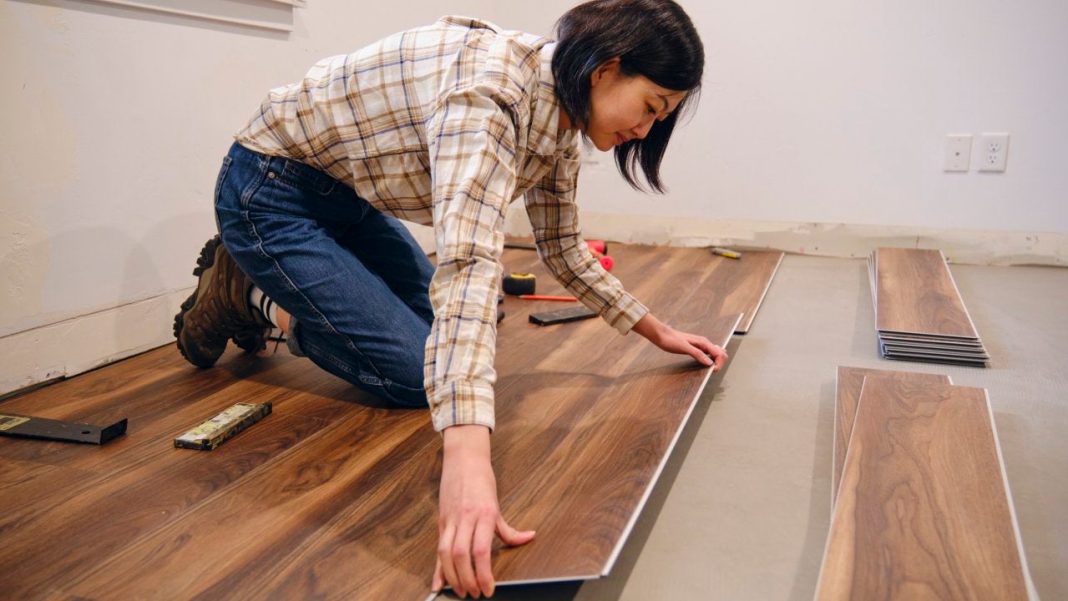Introduction
When it comes to home improvement, few things have as big an impact as your choice of flooring. The right flooring not only enhances the aesthetic appeal of your space but also plays a pivotal role in ensuring durability and comfort. As you embark on the journey of selecting the perfect flooring material for your home, it’s important to remember that the costs associated with installation go beyond the price of the material itself. Labor costs, in particular, are a crucial factor that can significantly impact your budget. In this article, we will delve into the intricate details of labor costs associated with flooring installation, shedding light on what you can expect during the process.
Factors Influencing Labor Costs
A. Type of Flooring Material
The type of flooring material you choose plays a paramount role in determining the labor costs of installation. Different materials require distinct installation techniques and varying amounts of time. Hardwood flooring, for instance, demands precision and expertise due to its delicate nature, whereas laminate flooring might be relatively quicker to install. Tile, carpet, and other materials each come with their own set of challenges, which affect the amount of labor required.
If you’re in the San Diego area, considering different types of flooring materials for various locations in your home, check out service areas to understand how their expertise extends to multiple flooring types and locations.
B. Floor Preparation
The old adage “preparation is key” couldn’t be truer when it comes to flooring installation. The state of your subfloor and the level of preparation required can greatly impact labor costs. Uneven subfloors might need leveling, and in some cases, the removal of old flooring materials becomes necessary. This process adds to the complexity and time required for installation, subsequently affecting labor costs.
C. Room Size and Layout
The size and layout of the room where the flooring is being installed also contribute to labor costs. Larger rooms naturally demand more time and effort to ensure a seamless installation. Additionally, intricate layouts with multiple corners and angles can be more time-consuming, as they require careful measurement and precise cuts to achieve a polished finish.
Types of Labor Cost Structures
A. Square Footage Rate
One common method used by contractors to calculate labor costs is the square footage rate. This rate is determined by the size of the installation area. The larger the area, the more labor is generally required, resulting in higher costs. If you’re in San Diego, various flooring contractors offer competitive square footage rates tailored to the specific service areas.
B. Hourly Rate
In some cases, contractors might charge an hourly rate for smaller projects or unique installations. This approach can be beneficial if you have a project that doesn’t neatly fit into the square footage calculation model. However, it’s important to have a clear understanding of the estimated time required and the hourly rate to avoid any surprises.
Additional Labor-Related Expenses
A. Removal and Disposal
The process of removing old flooring materials and properly disposing of them is a labor-intensive task. This step is not only essential for a clean installation but also for ensuring a fresh foundation for your new flooring. The labor involved in this stage should be factored into your overall installation cost.
B. Underlayment and Adhesive Application
Underlayment and adhesive play a crucial role in the longevity of your flooring. Proper installation of underlayment and adhesive requires attention to detail and expertise. The time spent on this stage directly impacts labor costs, but it’s an investment that ensures your flooring stands the test of time.
C. Finishing Touches
The finishing touches, such as trim, molding, and transitions, are what elevate your flooring installation from good to exceptional. These details require precision and skill to seamlessly integrate with the rest of the room. While they may add to labor costs, they contribute significantly to the overall aesthetics of your space.
Getting Quotes and Estimates
A. Importance of Multiple Quotes
Obtaining quotes from multiple contractors is crucial in understanding the competitive labor costs in your area. Each contractor might have a slightly different approach to pricing, so comparing multiple quotes gives you a clearer picture of what to expect.
B. Understanding the Quote
When you receive a quote, take the time to understand the breakdown of labor costs. Ask questions if certain aspects are unclear. Reputable contractors will be happy to explain the components of their pricing and help you make an informed decision.
DIY vs. Hiring a Professional
A. Pros of Hiring a Professional
While DIY projects can save money, there’s a lot to be said for hiring a professional for your flooring installation. Professionals bring expertise, experience, and the assurance of quality workmanship. Reputable contractors in San Diego, like Flooring Contractors San Diego, offer comprehensive services that encompass a wide range of flooring types and service areas.
B. Pros and Cons of DIY
While DIY projects might be tempting, they’re not always the best choice for complex installations. Mistakes made during DIY installations can lead to costly repairs down the line. Assess your own skill level and the complexity of the project before deciding whether to go the DIY route.
Conclusion
As you embark on your flooring journey, it’s important to remember that labor costs are a crucial component of the overall installation process. By understanding the various factors that influence labor costs, you’ll be better equipped to make informed decisions. Whether you’re considering hardwood, laminate, tile, or carpet, in San Diego or its various service areas, prioritizing the quality of the labor is essential for a flooring installation that not only looks beautiful but also stands the test of time.

